RAAF Over Italy
This article is part of a series:
This the fifth of six P-40s I built early in 2023 for a club display for the Australian Model Expo. I built them as one group of three and a second group of four. A seventh aircraft was not finished in time for Expo but is now completed.
-
RAAF over Italy
Subject
Sqn. Ldr. Brian Eaton was the commander of 3 Sqn from August 1943 to February 1944 and flew this P-40L when the squadron was based at Cutella Airfield, Italy. The base was shared with other RAF squadrons. At this time the squadron was mainly flying ground support missions, armed with either a pair of 250 lb or one 500 lb bomb.
On the 29th of April 1944, the squadron came under attack from an unexpected quarter. Four US 325th Group P-47 Thunderbolts mistook the airfield for a German one and strafed bombed up 3 Sqn Kittyhawks in their dispersal. One Kittyhawk was set alight and the quick thinking of two armourers, Cpl Slim Moore and LAC Kev Harris saved greater damaged when they unshackled the bomb it was loaded with and towed it clear of the burning aircraft. They then started-up and taxied two other aircraft away from the fire. One of the aircraft saved was that of Brian Eaton. The commanding officer of the US 325th Group later visited the squadron to apologise for the incident.
3 Squadron RAAF has the distinction of being the first to blood the P-40 Tomahawk in combat when they engaged the Vichy French Air Force in Syria and Lebanon in June to July 1941, claiming 24 aircraft destroyed and 8 damaged in the air and 25 destroyed and 43 damaged on the ground to give a total of 49 destroyed and 51 damaged.
The squadron then returned to Egypt and participated in the see-sawing battles that eventually led to the Axis being expelled from Africa. 3 Sqn then participated in action over Italy up to the end of the war. They also have the distinction of operating almost every major version of the P-40 when they handed their Tomahawks in for P-40E Kittyhawk IAs. Next, they operated the P-40F (Kittyhawk IIA), a few P-40Ks (Kittyhawk III) to make up for unserviceable P-40Fs, then P-40Ls (Kittyhawk IIB) and, finally, P-40Ns (Kittyhawk IV). They finished the war flying P-50 Mustangs.
Like the P-40F, the P-40L was powered by the Packard built Merlin engine. In order to try and get as much performance out of the airframe as possible, the L underwent a weight reduction program. Initial versions were armed with only four machineguns in the wings, for example. However, they were often restored to six guns in squadron service. Fuel volume was also reduced, having the obvious impact on range. All the efforts only produced a modest 4 mph speed increase over the P-40F.
Towards the end of production, the Merlin started to be prioritised for other aircraft such as the P-51 Mustang and an unknown number of P-40Ls were converted back to the Allison engine as the P-40R. These were used for pilot training in the US.
Construction
I built two of these kits in parallel, this one as a Kittyhawk IIB (P-40L) and the other as a P-40F-5. Construction of the two kits was essentially identical and is described here.
The P-40L had the late windscreen with the triangular vent on the left, which is a feature of the late P-40Fs, P-40Ms and early P-40Ns, but the kit supplies the early windscreen. So, I masked and painted the vent. Ironically, the P-40N I built next is a late model when they reverted to the earlier ventless windscreen, but the kit (an AMT kit) came with the windscreen with vent. So, I removed the P-40L windscreen, removed the painted-on vent and swapped windscreens between the L and N.
Painting and Markings
This aircraft was delivered in factory painted RAF temperate scheme using US equivalent paints, (Dupont) Dark Earth (2) (50:50 Gunze H37 Wood Brown and H456 Staubbraun), (Dupont) Dark Green (Gunze H78 Olive Drab (2)) and (Dupont) Sky Gray (Tamiya XF-20 Medium Grey).
The decals for this aircraft come from Xtradecal, X48150, "Fighters over Africa and the Mediterranean Pt.2" and are very good.
The top surface of the tailplane was painted in a yellow and black checkered pattern. Possibly this was done for quick recognition within the squadron during low-level strike missions. The decal set provides the black checks, so I painted the yellow prior to applying the decals. However, the decals proved to be far too small, so I masked the yellow checks and sprayed the black.
From the photo of this aircraft, it can be seen that the port wing tip under-surface is darker than for the rest of the aircraft. This makes it likely that this is a replacement so I masked and painted it Neutral Grey underneath and Olive Drab on top.
A bit of weathering, exhaust stains and radio wire and it was done.
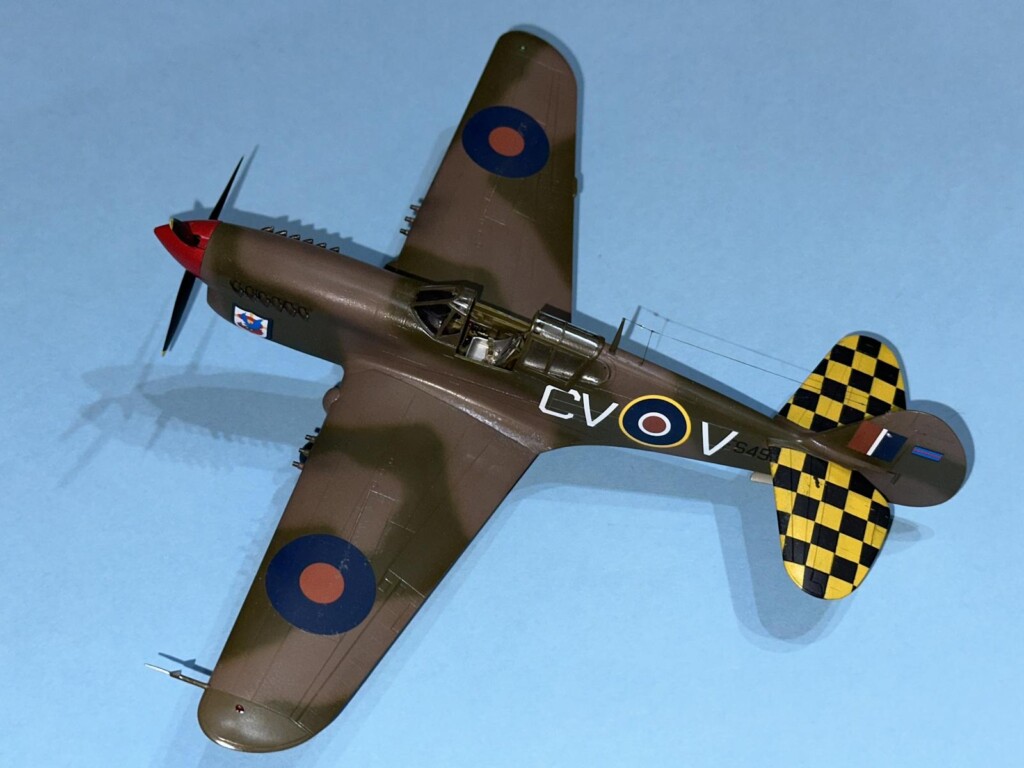
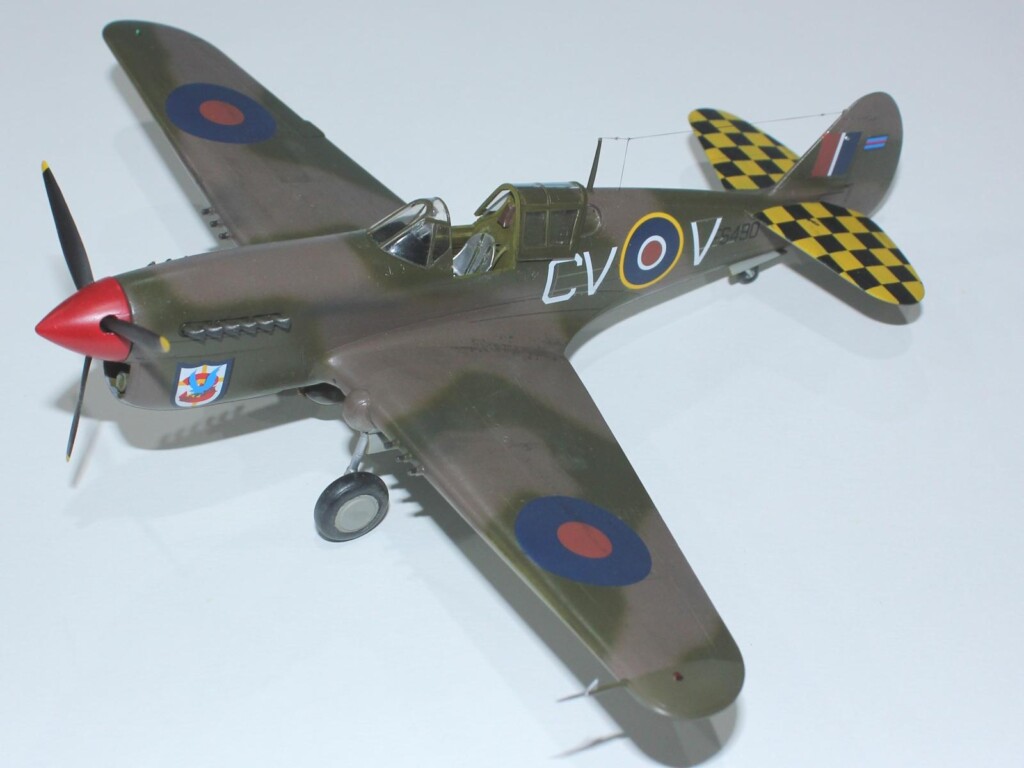
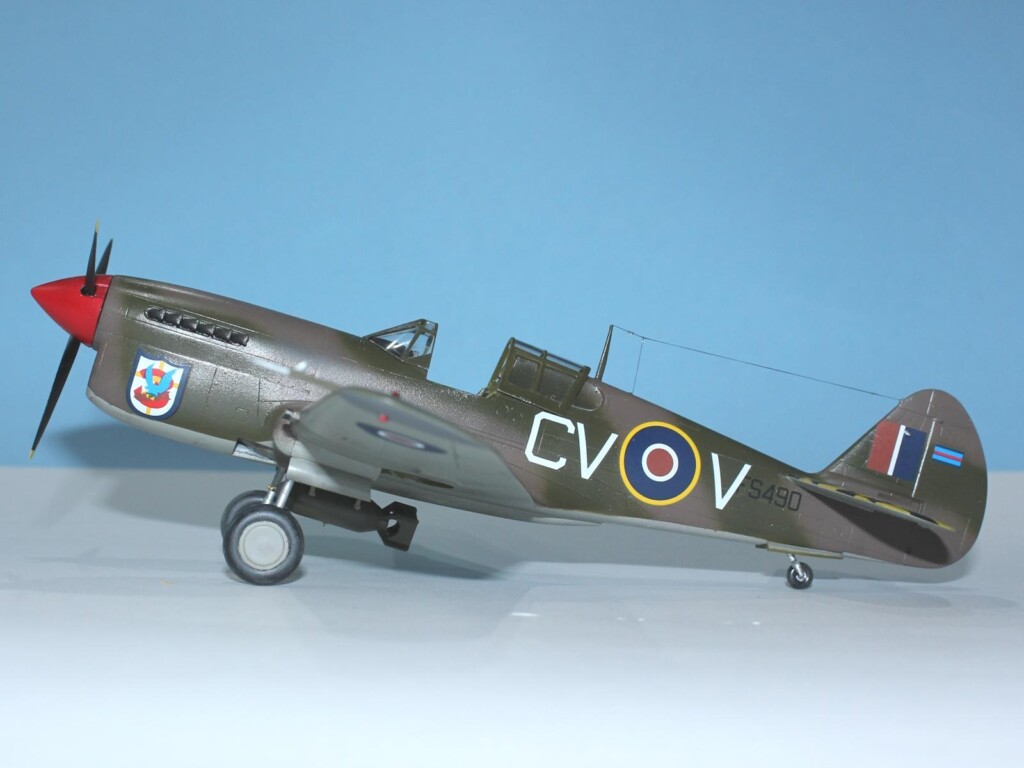
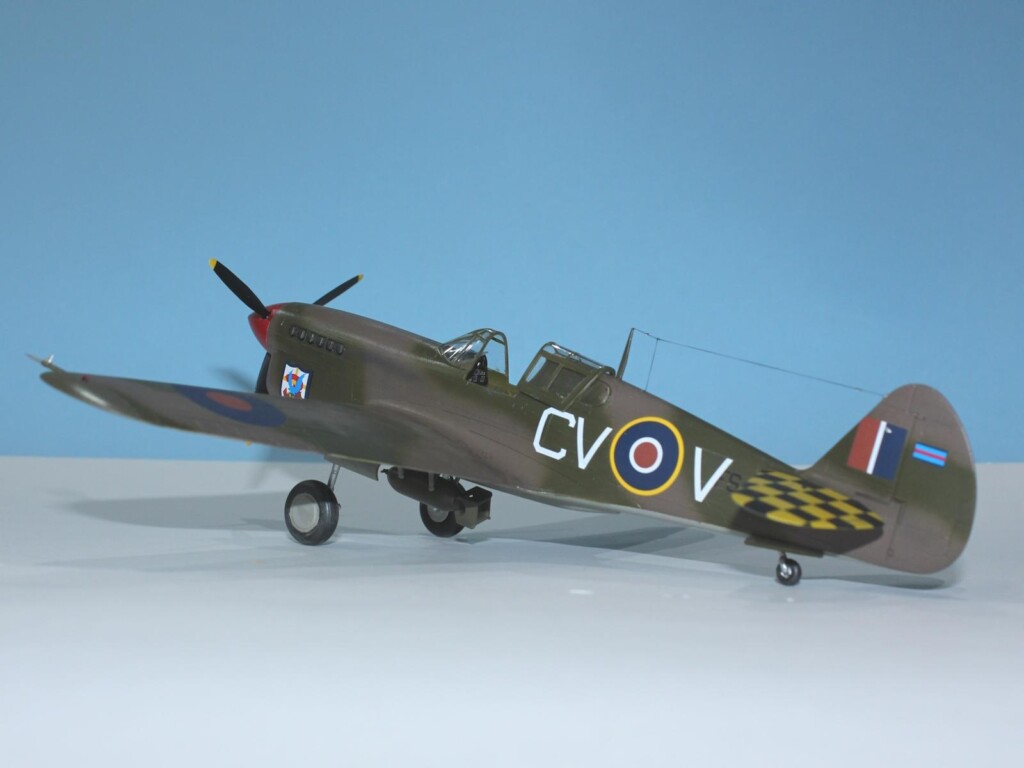
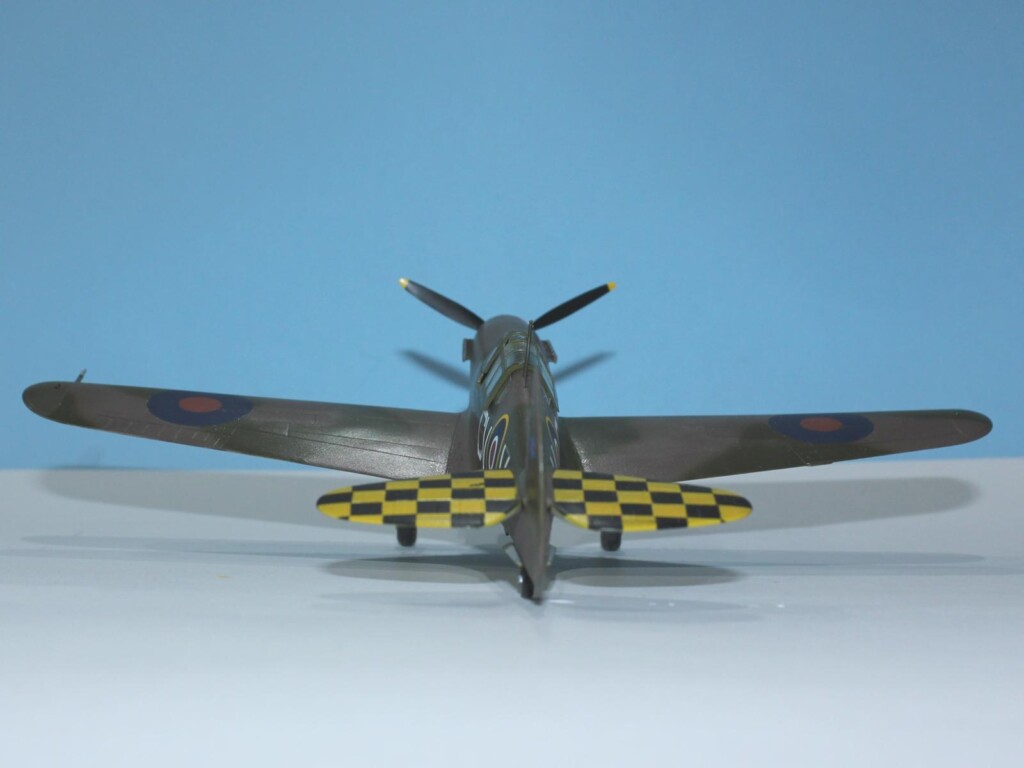
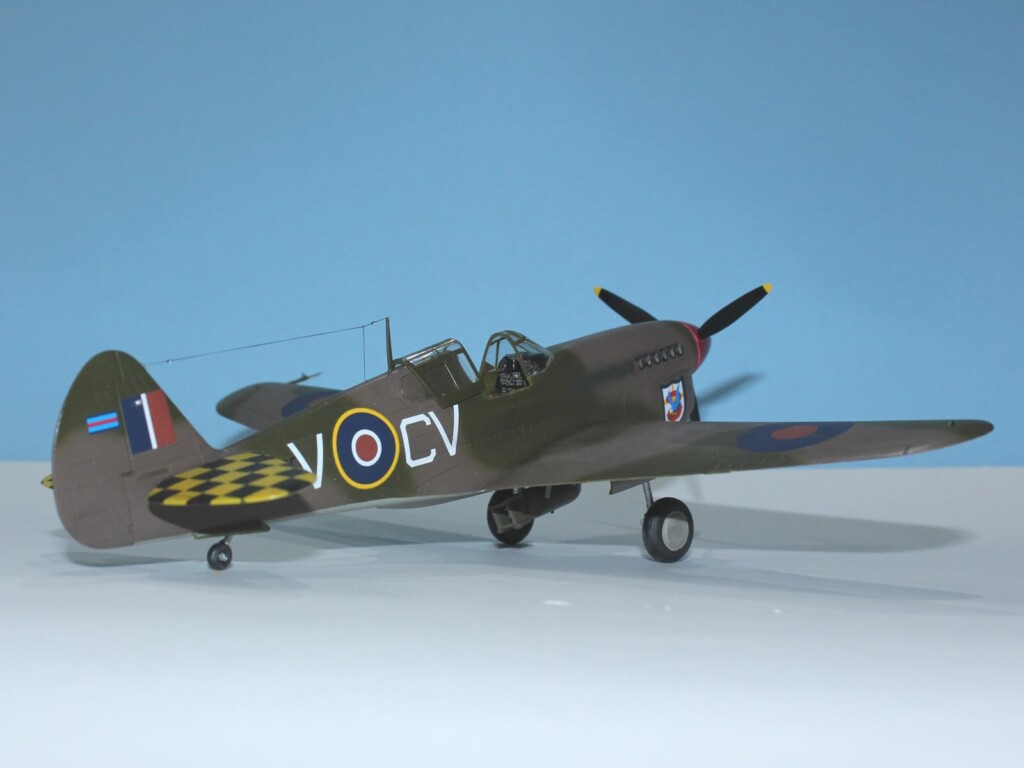
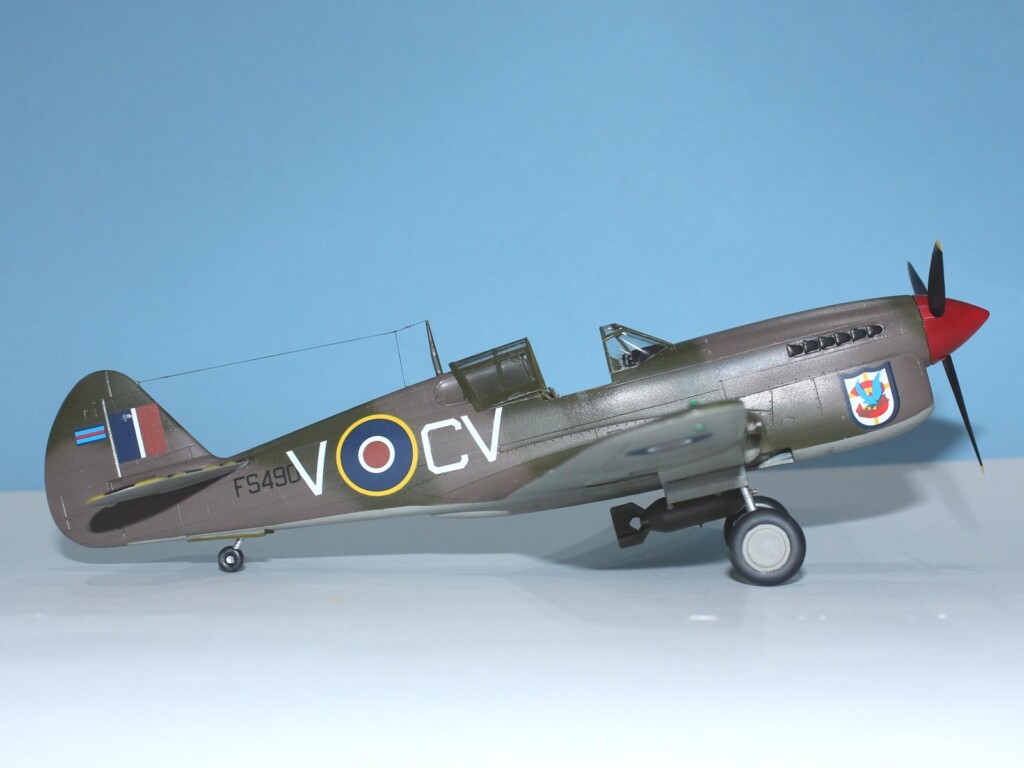
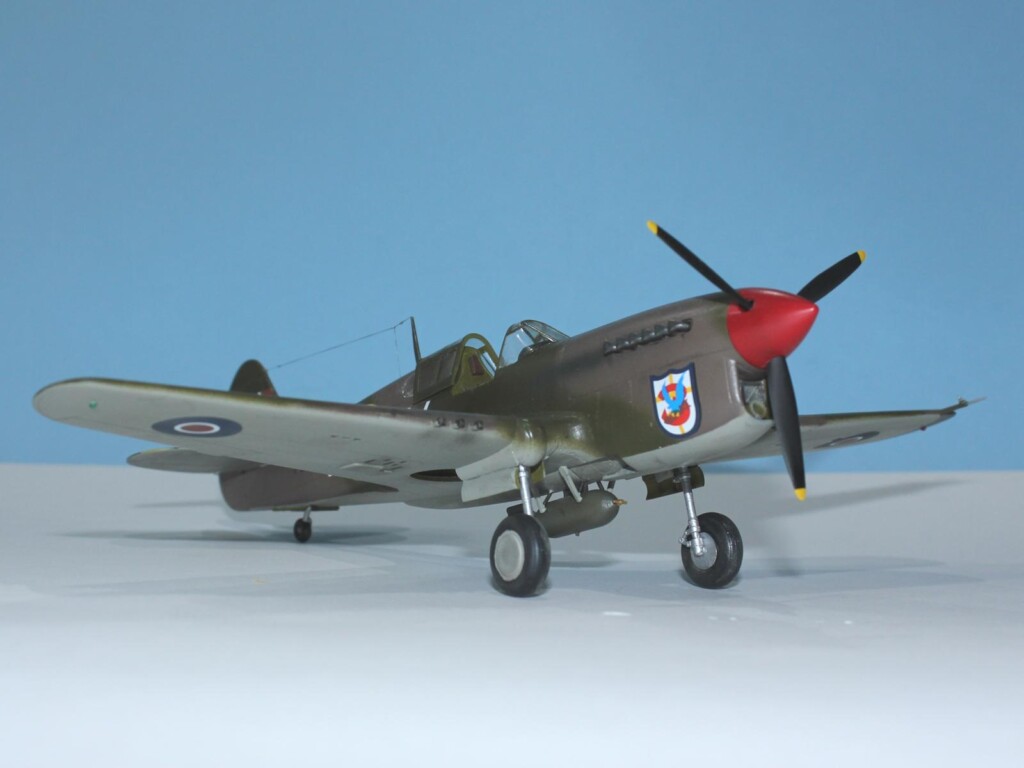
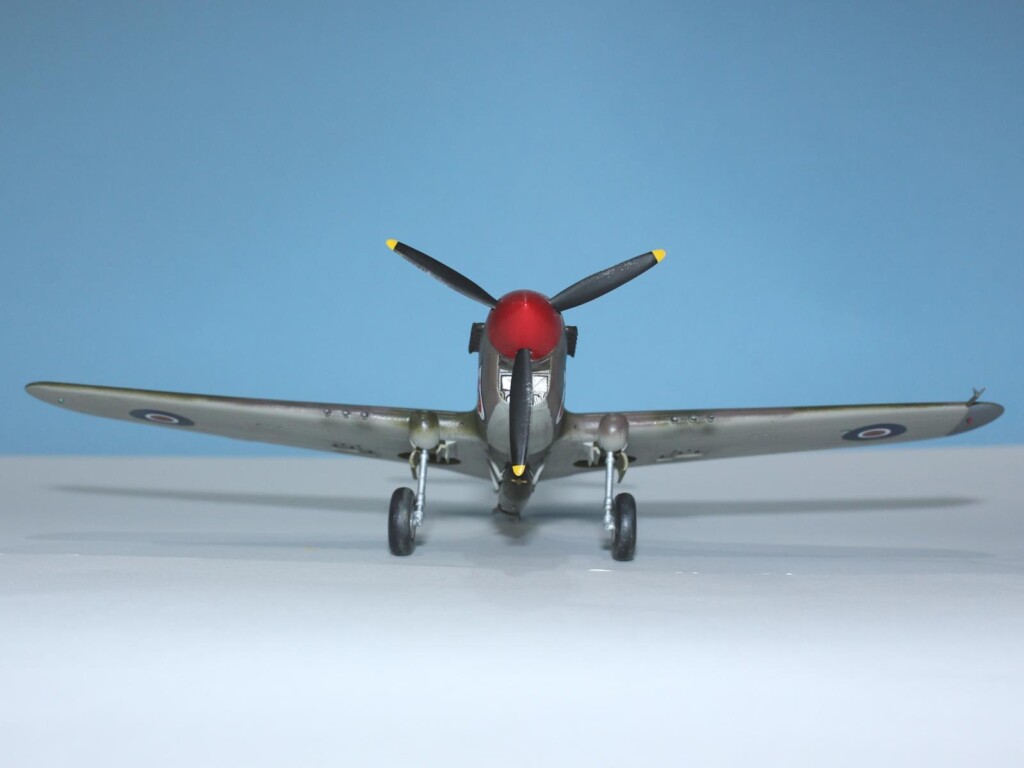
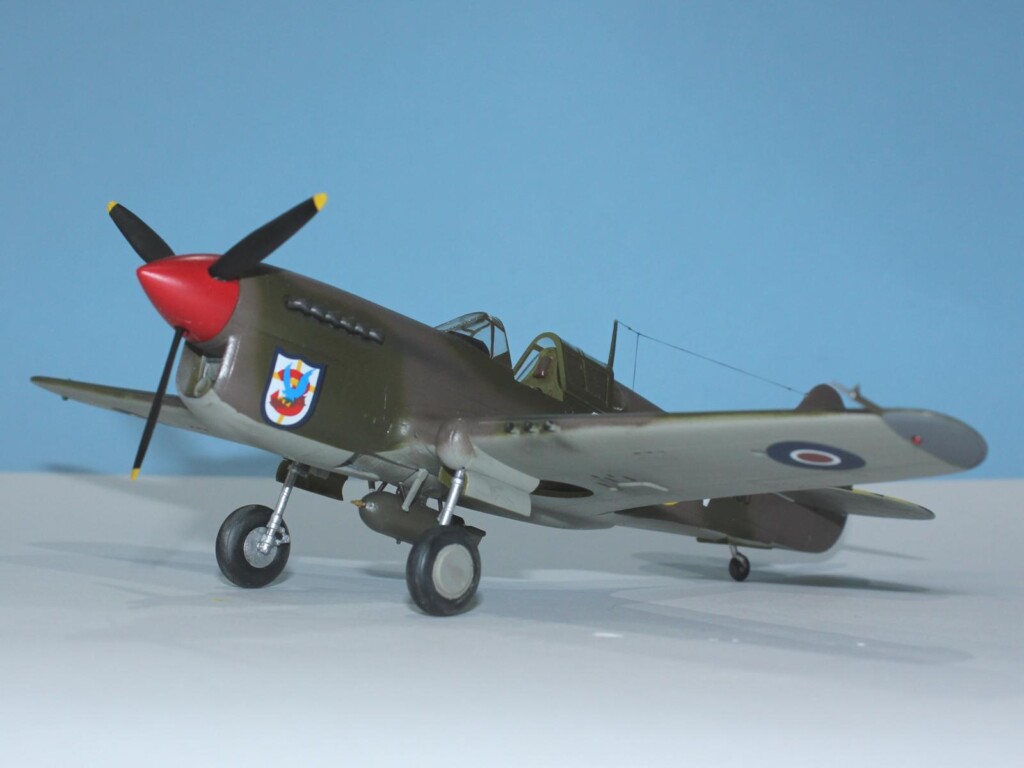
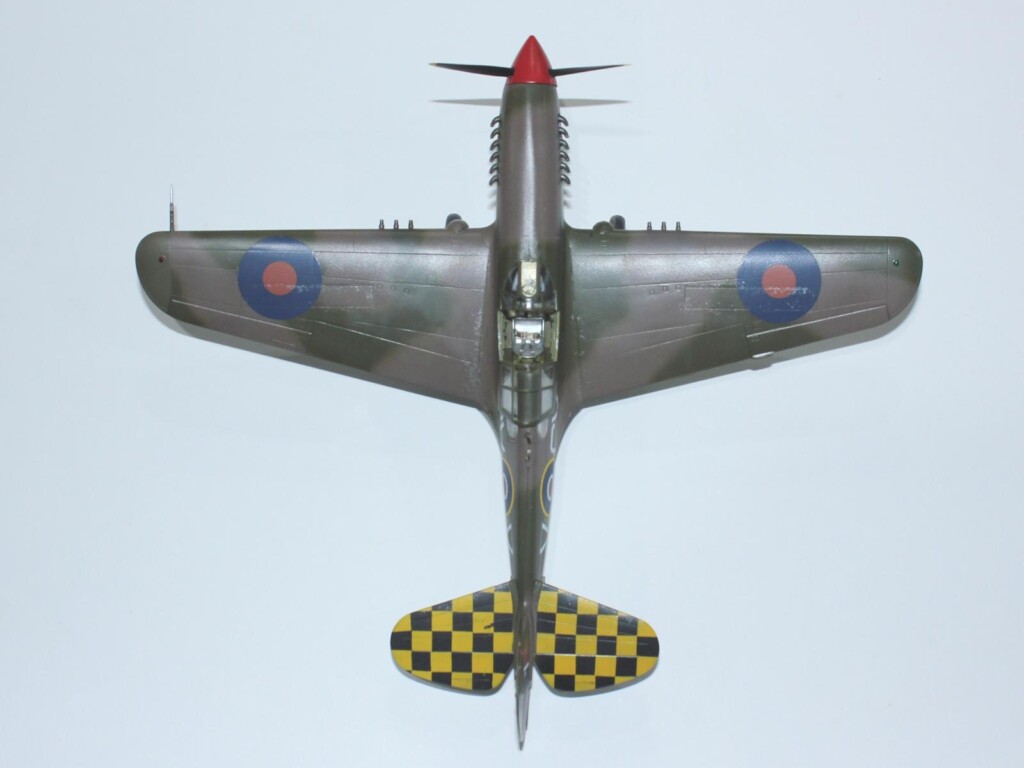
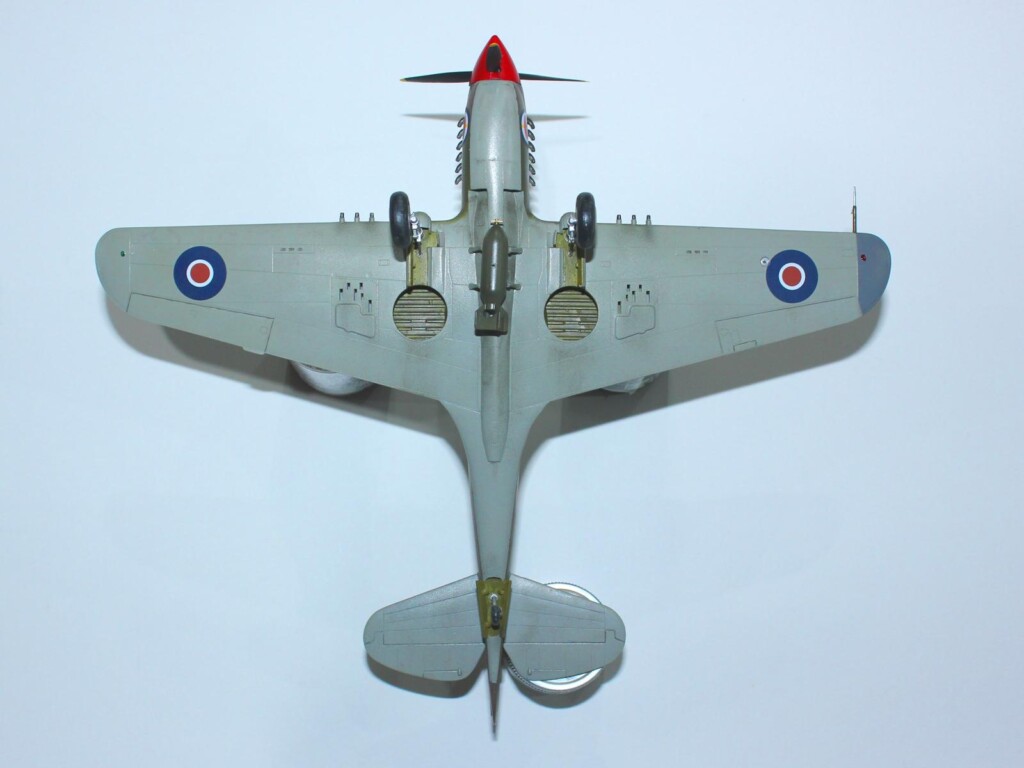
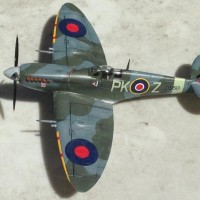

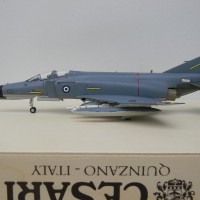
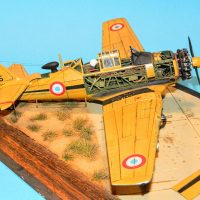
Very nice- those yellow/black checkers on the tail look really sharp. Great build!
G'day David (@dbutlr),
I agree.
I wasn't aware of this scheme until I saw the Xtradecal set.
Most profiles of the aircraft don't include them but there is a photo of the aircraft and a newsreel movie showing that they were there.
Absolutely beautiful result on the RAAF P40, Michael @michaelt
The checkerboard tail is indeed superbly done.
A great article as well.
G'day John (@johnb),
Thanks, as always.
Very clean build and excellent paint job, Michael. This series of kits lacks some of the detail and finesse of Hasegawa's, but H has not yet done an F-L and maybe never will, so you have made a polished gem of this rough-cut stone. Congratulations!
G'day Christopher (@brummbaer),
You are right about the kit.
I have heard that Eduard will be doing the E-L (probably because they had the old M and N re-boxing of the Mauve kits) and I can't wait.
Excellent post! I've built both the F and L, and did not know that some Ls had the extra guns installed or that some were converted back to Allison engines. Very interesting
G'day Chas (@chasbunch),
Research is half the fun of the build.
Thanks for looking.
Excellent job, Michael! A striking scheme as well! You can never build too many P-40s!
Excellent writeup!
G'day Spiros (@fiveten),
Too many P-40s? I shall give that a go when Eduard releases their new kits, I'm sure.
Another beautiful P-40 and more great history. It's funny, though not for the guys in 3 squadron, that the 325th strafed and bombed there airfield full of P-40s when the 325th transitioned from P-40s to the P-47 themselves. You would think they knew what P-40s looked like, but in the heat of combat, with adrenaline pumping, things happen fast, and they probably realized as it happened or immediately after.
G'day Clint (@curtishawk),
A fighter pilot told me that when you are flying low at speed, all you can see is what is directly in front of you - and that is coming up fast.
Too often we see what we expect, not what is.
Thanks for the comments.
Really nice work, @michaelt. P-40 markings I was unfamiliar with. Great result.
G'day Tom (@tcinla),
As I said above, I only became aware of it thanks to the Xtradecals set.
Thanks for the comments.
Well done, Michael (@michaelt). It was fun following along on the multiple builds of the other P-40s. Glad you got the last one done.
G'day George (@gblair),
Thanks for following along.
I'll be posting the last N build soon (and the first Tommahawk).
Another excellent addition to your P-40 collection.
G'day George (@chinesegeorge),
Thanks for looking.
You can never have too many P-40s.
Marvelous job on this P-40. @michaelt
G'day John (@jdtruby),
Thanks for your comment.
Love those checkerboard markings, and another nice P-40!
G'day Greg (@gkittinger),
Yes it does stand out on the shelf with that tail.
very very nice!
G'day Lis (@lis),
Thanks, again.